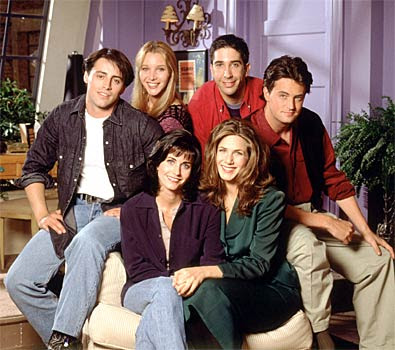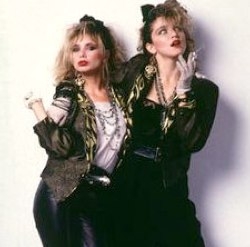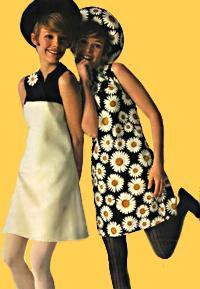This started the indifferent, anti-conformist approach to fashion which was popular throughout the 1990s, leading to the popularisation of the casual chic look, including T-shirts, jeans and trainers.
Fashion was also characterized by minimalist styles during this time, some of which were dubbed "anti-fashion", a backlash against the "excessive" fashion of the 1980s. Subcultures such as Grunge, Goth, Emo, Nu Metal, Urban and Preppie defined and influenced the fashion of the era.... Most of the fashion trends of this decade are based around blue jeans and the T-shirt. Fluorescent or neon clothing, which became popular in the 1980s, remained popular until 1989. As of 1989 it was no longer popular, as it had been replaced by plaid.
Continuing from the 1980s leggings remained popular up until 1996. They
were usually worn with oversized sweaters and sweatshirts in the cooler
months and with oversized tee shirts in the warmers months.
After a dip in popularity in the mid-90s, sporty styles became increasingly popular later in the 90s. The late 90s sporty look was dominated by tearaway track pants with buttons on the side that could be “torn” open. Hip-hop fashion developed into a style more distinct from other sporty styles, baggy jeans, hooded sweatshirts, football jerseys, puffy jackets, and large gold chains became staples of the hip-hop look.































.jpg)





















